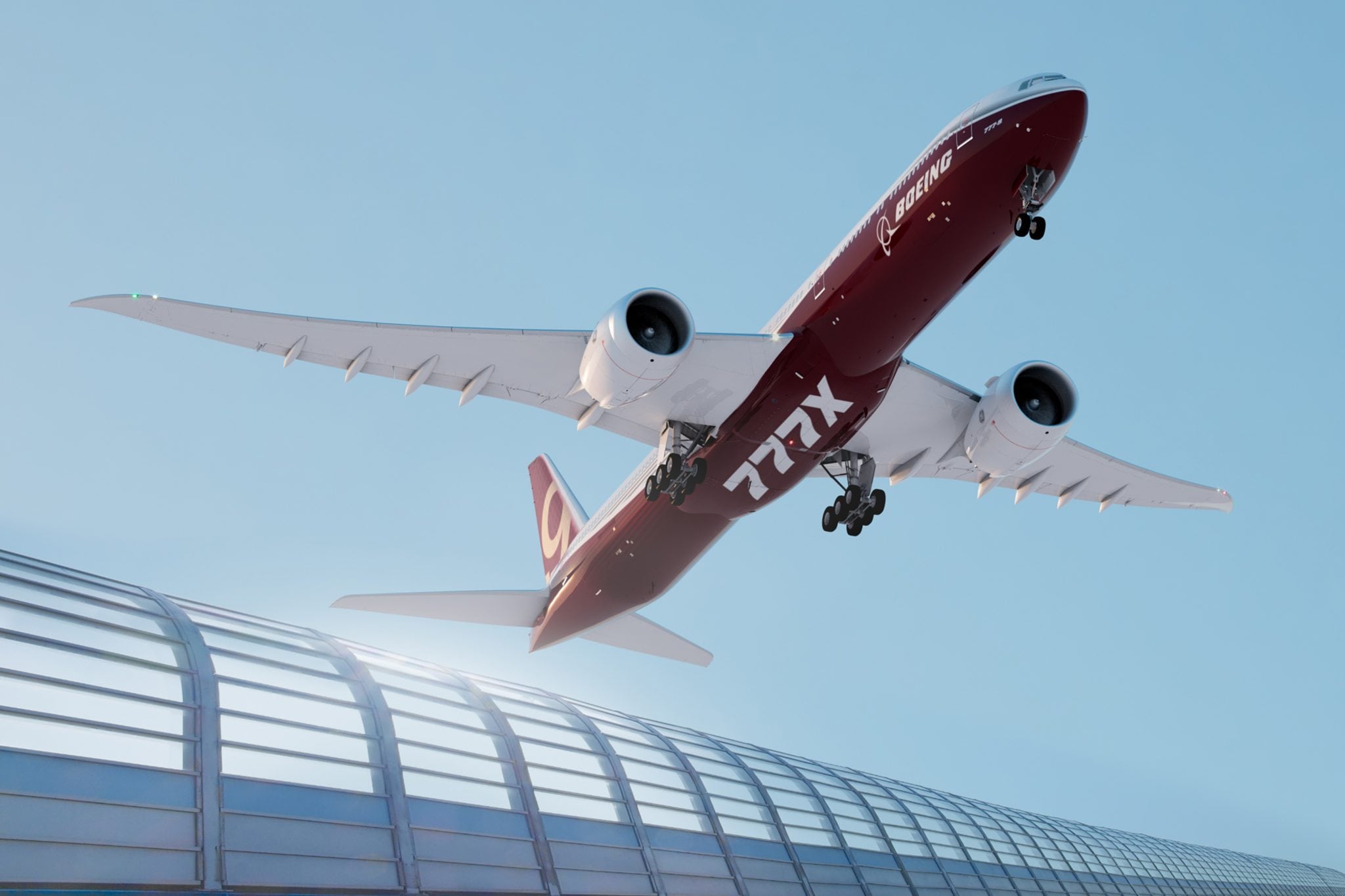[Avionics Magazine 10-26-2016] Boeing’s banner third quarter resulted in raised forecasts as the company upped revenue earnings by $500 million to between $93.5 and $95.5 billion on higher commercial deliveries. The boost comes from an increased commercial delivery rate — raised to a 745 to 750 commercial jet delivery window, up from a 740 to 745 forecast — although commercial orders are slowing.
 |
| Boeing 777X. Photo: Boeing |
“In the commercial market new order activity is continuing at a moderate, but healthy pace. In particular, we are seeing strong demand for narrow-body aircraft such as the 737 Max,” Boeing CEO Dennis Muilenburg said during the company’s Oct. 26 third quarter conference call. The company recently saw a large order from Qatar Airways, which is looking to supplement its short-haul routes with up to 60 737 Max 8 aircraft in an order worth $6.9 billion. As a result of increasing demand in the way of 4,300 firm orders for the Next Generation (NG) and Max models, the company said it is on track to increase the production rate for the 737 family from the current 42 per month to 47 per month in the third quarter of 2017, and then to 57 per month in 2019. Even with the 57 per month rate, however, Muilenburg emphasized that the company is still oversold on the aircraft.
Muilenburg also pointed to the possibility of a “stretch” version of the 737 Max that could emerge to fill the gap left by the end of 757 production, saying first delivery of a possible 737 stretch could happen around the end of the decade.
The wide-body market is less bullish, however, but the company still forecasts large long-term growth driven by airlines’ needs to replace aging aircraft with more advanced and fuel-efficient models, as well as solid passenger demand, which continues to outpace global Gross Domestic Product (GDP) growth.
“In the wide-body segment we continue to see some near-term hesitation in certain regions and the order activity has been more measured. In the long-term, however, our review remains positive, with our 20-year outlook projecting demand for more than 39,600 aircraft valued at $6 trillion,” Muilenburg added. Specifically, for the wide-body market, the company sees demand for more than 9,000 aircraft over the next 20 years according to its latest global market outlook, with replacement demands charting to accelerated rates early next decade.
Boeing has chosen not to cut production of the 777 aircraft, although Muilenburg said production might fall by one to two planes a month. In January, the company announced plans to cut 777 production from 8.3 per month to seven per month at the beginning of 2017 in order to manage flagging sales. The company is struggling to fill the gap between the 777 and the 777X, which is scheduled to begin production in 2018.
“For the current generation 777, our backlog now stands at more than 160 airplanes. So far in 2016, we have added 17 net new 777 orders. We’re on track to transition to the seven per month production rate at the start of 2017 as previously announced,” Muilenburg noted.
At this rate, buoyed by an order for 10 777-300ER aircraft announced earlier this month, delivery slots for 777 are now about 85 percent sold out for 2017. For 2018, when the company will begin phasing in production of 777X test aircraft, Boeing is roughly 60 percent sold out at the planned delivery rate of approximately 5.5 per month.
“When we consider the recent order additions and our ongoing campaigns to fill the remaining delivery slots, at this time we don’t envision a situation where we would need to lower production more than one or two units per month below our current plan. If that were to occur, implementation would begin in late 2017 or early 2018. On the other end of the spectrum, should we see success on ongoing campaigns, we may not need to adjust our existing production plans at all,” Muilenburg told journalists and investors on the Oct. 26 call.
777X orders already stand at 306 aircraft, which supports Boeings production plans to ramp up deliveries in 2020 and beyond; the company will have to keep an eye on 777 sales and the waning wide-body market as it looks to set the 2018 production rate and transition to the new model going forward.
Boeing Commercial Airplanes’ third quarter revenue stands at $17 billion, with 188 deliveries for the quarter.